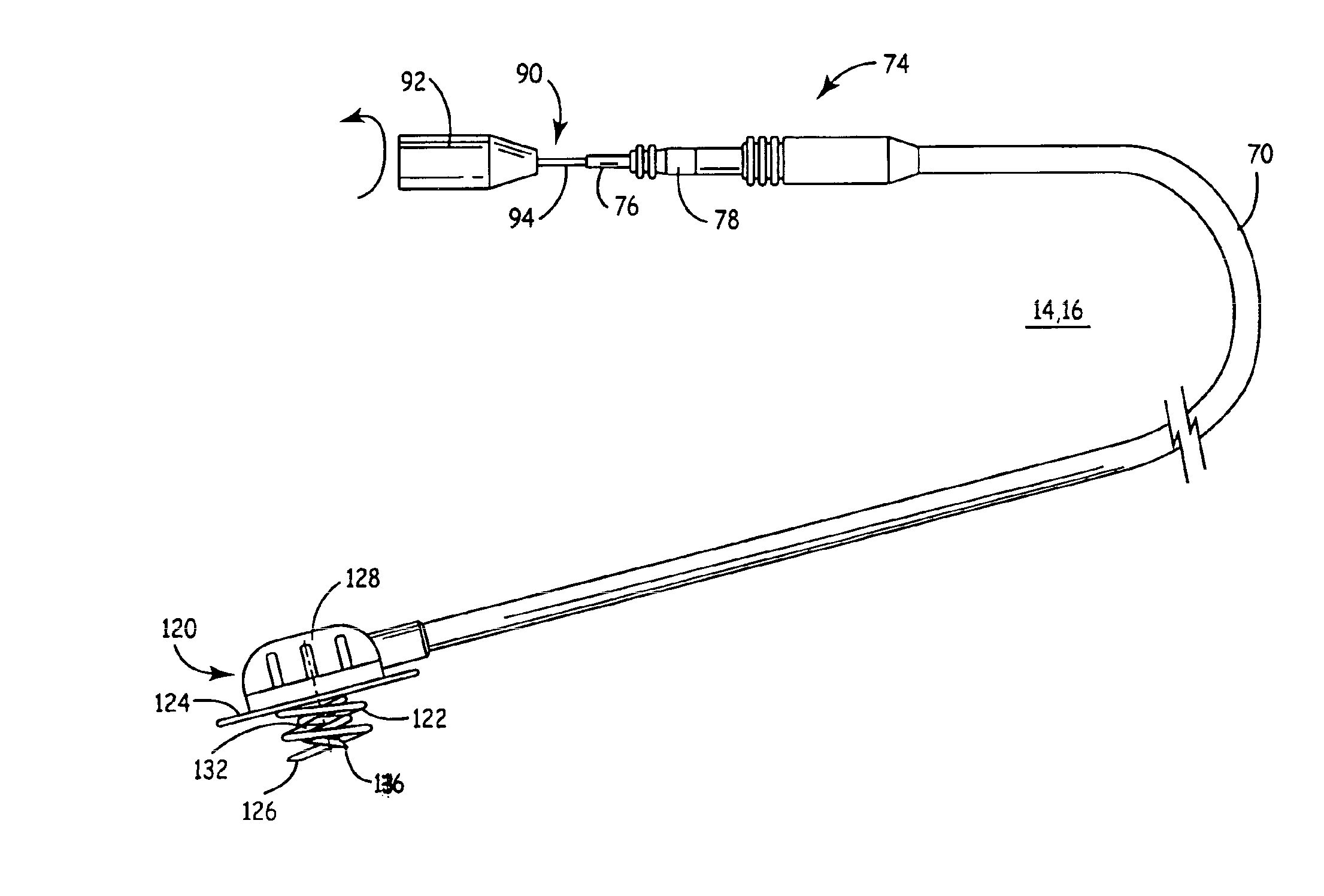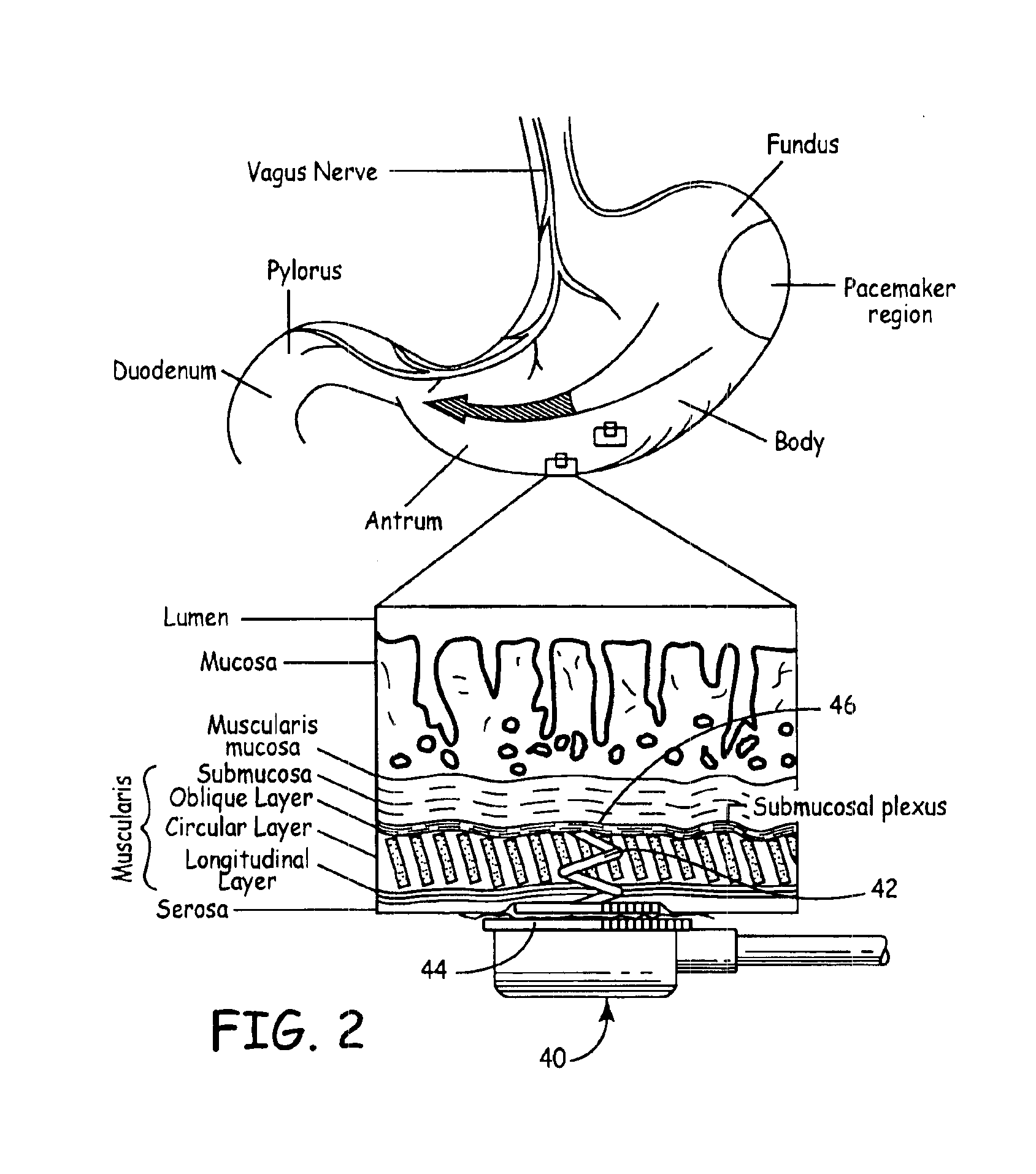Implantable gastrointestinal lead with active fixation
a technology of gastrointestinal lead and active fixation, which is applied in the field of gastrointestinal lead, can solve the problems of affecting the ability to sense, affecting the ability to absorb food, so as to reduce polarization and/or an anti-inflammatory agent, inhibit inflammation, and improve the effect of gastrointestinal function
- Summary
- Abstract
- Description
- Claims
- Application Information
AI Technical Summary
Benefits of technology
Problems solved by technology
Method used
Image
Examples
Embodiment Construction
[0045]In the following detailed description, references are made to illustrative embodiments for carrying out the invention. It is understood that other embodiments may be utilized without departing from the scope of the invention. In accordance with an aspect of the present invention, improved GI tract stimulation and sensing leads and methods and systems for effecting sensing and stimulation of at least one organ or region of the GI tract are provided.
[0046]A GI tract stimulation system 10 known in the prior art from the above-referenced '955 patent, for example, comprises an IPG 12 having a plurality of leads extending to sensing and / or stimulation electrodes passed through the serosa and embedded into the GI tract wall, e.g., the muscularis externa of the stomach wall, and held there by sutures. The stimulation / sense electrodes of the GI tract leads are shown in FIG. 1 coupled to the stomach wall through use of the fixation mechanisms of the present invention. However, it will b...
PUM
 Login to View More
Login to View More Abstract
Description
Claims
Application Information
 Login to View More
Login to View More - R&D
- Intellectual Property
- Life Sciences
- Materials
- Tech Scout
- Unparalleled Data Quality
- Higher Quality Content
- 60% Fewer Hallucinations
Browse by: Latest US Patents, China's latest patents, Technical Efficacy Thesaurus, Application Domain, Technology Topic, Popular Technical Reports.
© 2025 PatSnap. All rights reserved.Legal|Privacy policy|Modern Slavery Act Transparency Statement|Sitemap|About US| Contact US: help@patsnap.com



